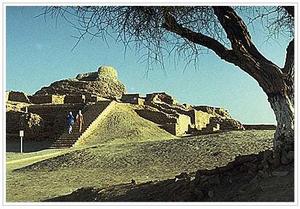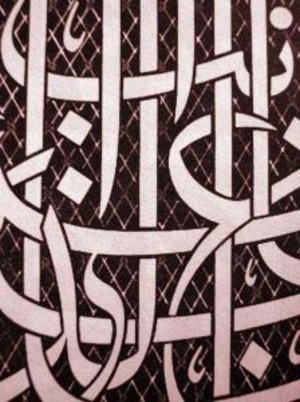Mohenjo-daro is an ancient Indu city in modern-day Pakistan. The city is sometimes called by other names, but the name Mohenjo-daro is the most common and means Mound of the Mohen. It was once a bustling city that could have housed roughly 35,000 people. It is now a mostly buried ruin that lies on the bank of the Indu River in the Sindh province.
Mohenjo-daro was built roughly four thousand to five thousand years ago. It was constructed mainly out of fired brick, but other materials, such as mud brick and timber were also used. The city spread out over nearly one square mile of land and consisted of two main parts.
The major part of the city, which is referred to as “The Citadel” was made up of several large structures and a few smaller structures. A large bath, known as “The Great Bath,” which was complete with an advanced drainage system was part of “The Citadel,” as well as a large building that is referred to as “The Granary,” which may not have been a granary at all, some residential buildings and two buildings, which are considered to be assembly halls. One of the assembly halls is referred to as “The College” and the other is known simply as the “Assembly Hall.”
The second part of Mohenjo-daro is referred to as “Lower Town.” It was a largely residential area that housed a variety of shops and many small homes. There is evidence of an extensive drainage system in Mohenjo-daro, which reveals that its people were knowledgeable when it came to drainage and flood control. The homes were equipped with bathrooms that drained into a city sewage system. Lower Town” was constructed in a grid style with streets that intersected throughout the community; the streets were also drained.
The city of Mohenjo-daro was situated in an ideal location for human habitation, at the time. The land around the city was naturally irrigated by the Indu River, so the people were successful in their agricultural endeavors. The Indu River also leant the people a means of travel and thus a means of trading with other communities. That the people of Mohenjo-daro traded with other communities is evidenced by the variety of materials that have been found there. There were also skilled tradespeople in the city. Pottery shops, metal-working shops, bead-making shops and simple artwork have all been found at the site.
The city of Mohenjo-daro thrived for at least a few hundred years, but it was abandoned roughly 3,700 years ago. The Indu River changed course around that time and the resulting flooding would have caused the land to become useless for farming. Some experts believe that the city itself may have flooded as well, but there is no concrete evidence to suggest that it did or that it did not. Over time the abandoned city became hidden under the earth and forgotten to the world, until it was discovered in 1922 by R.D. Benergi.
Extensive excavations at the Mohenjo-daro site began soon after its discovery. There were several subsequent excavations, the last of which was carried out between 1964 and 1965. Since that time, excavations have been prohibited due to problems with protecting the structure from the elements. Very small excavations are still allowed and conservation efforts and surveys still occur at the site, which is currently under the control of the Department of Archaeology and Museums, Government of Pakistan.
Only about one-third of the ruins of the ancient city of Mohenjo-daro is visible today. Because excavation ceased, we are unable to see what the rest of the city looked like, though experts seem to have a good idea. Luckily, the city was built on a ridge and still manages to remain above the flood plains of the Indu River or else we never would have seen any of it, unless it had withstood being underwater for quite a long time.




